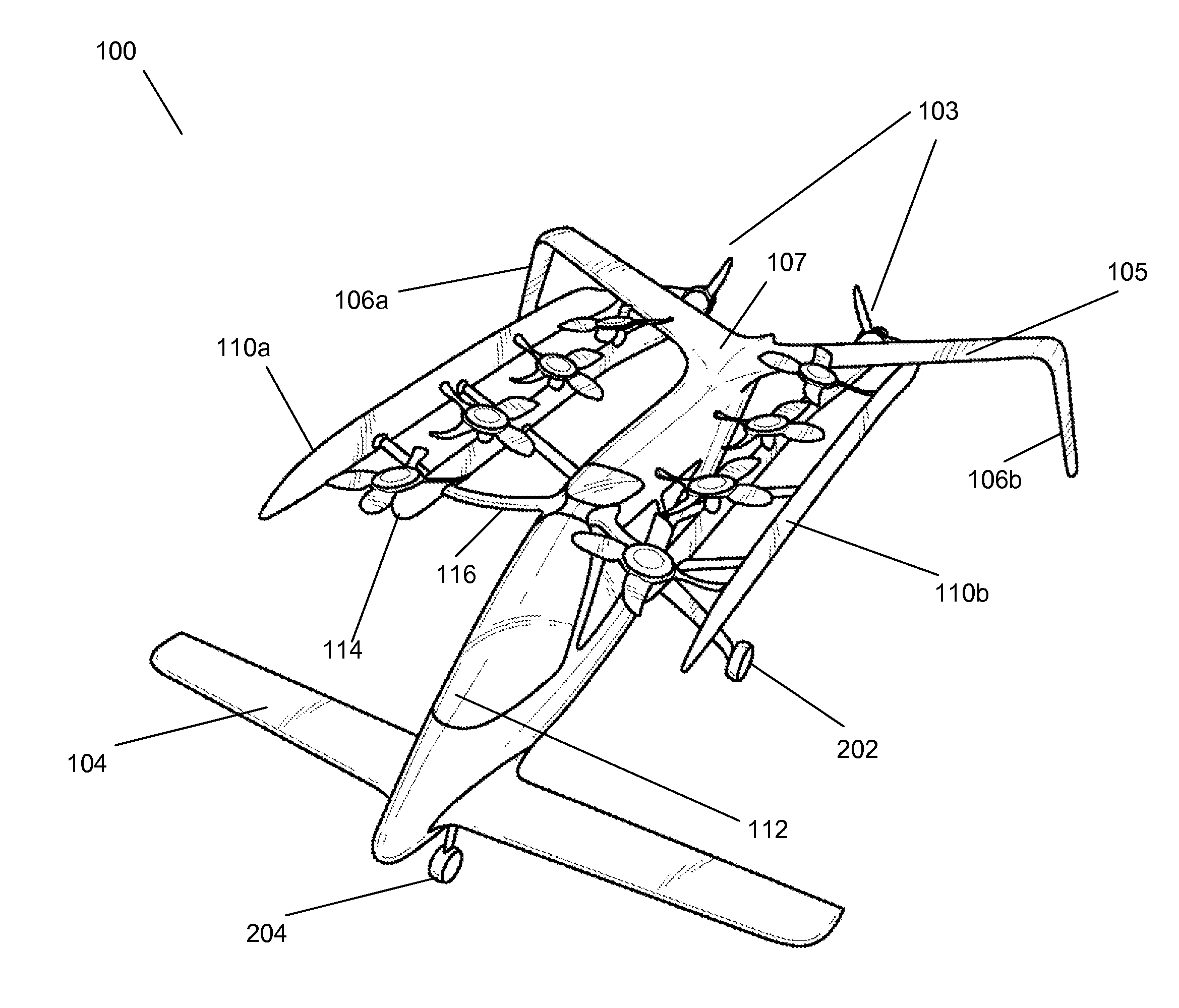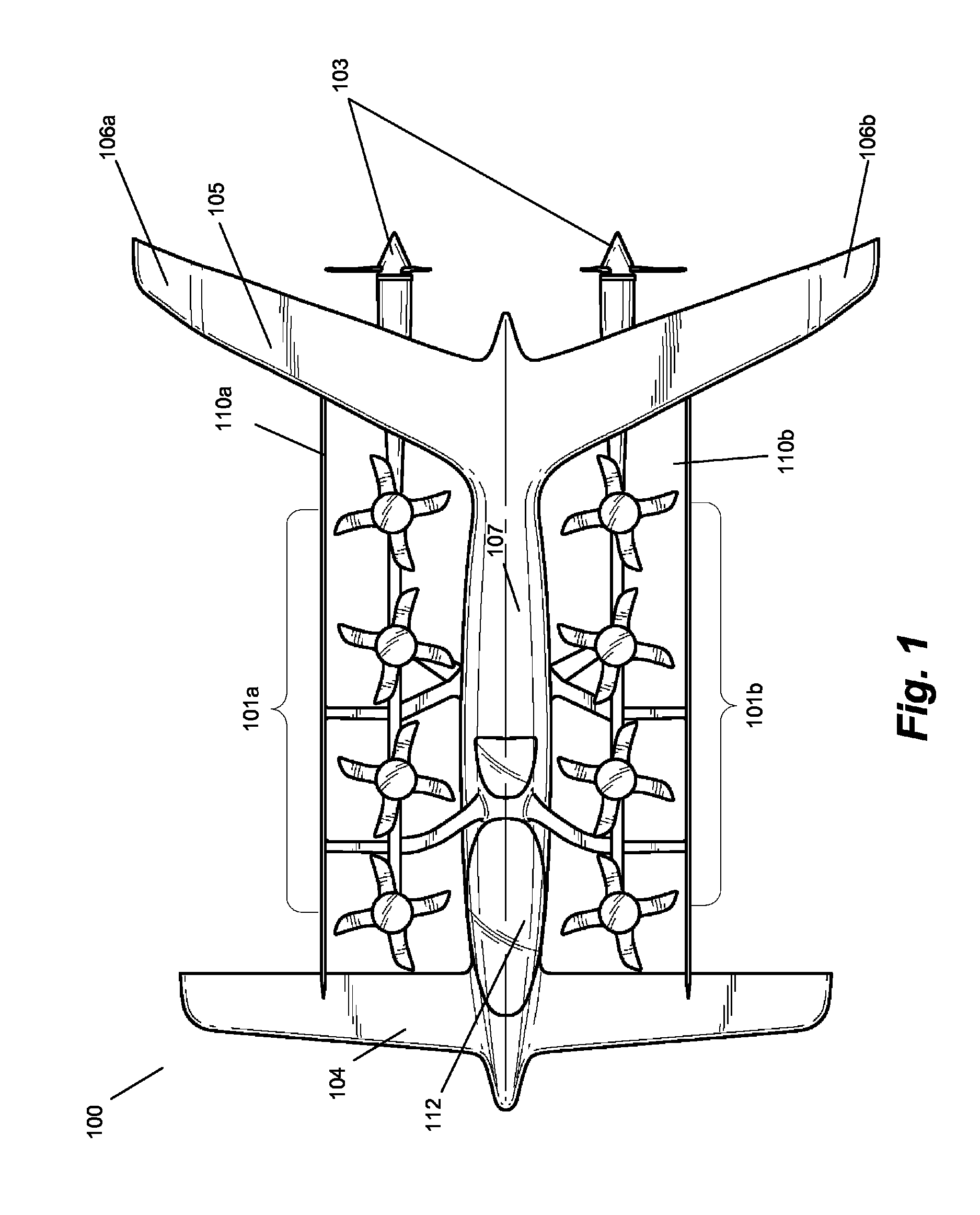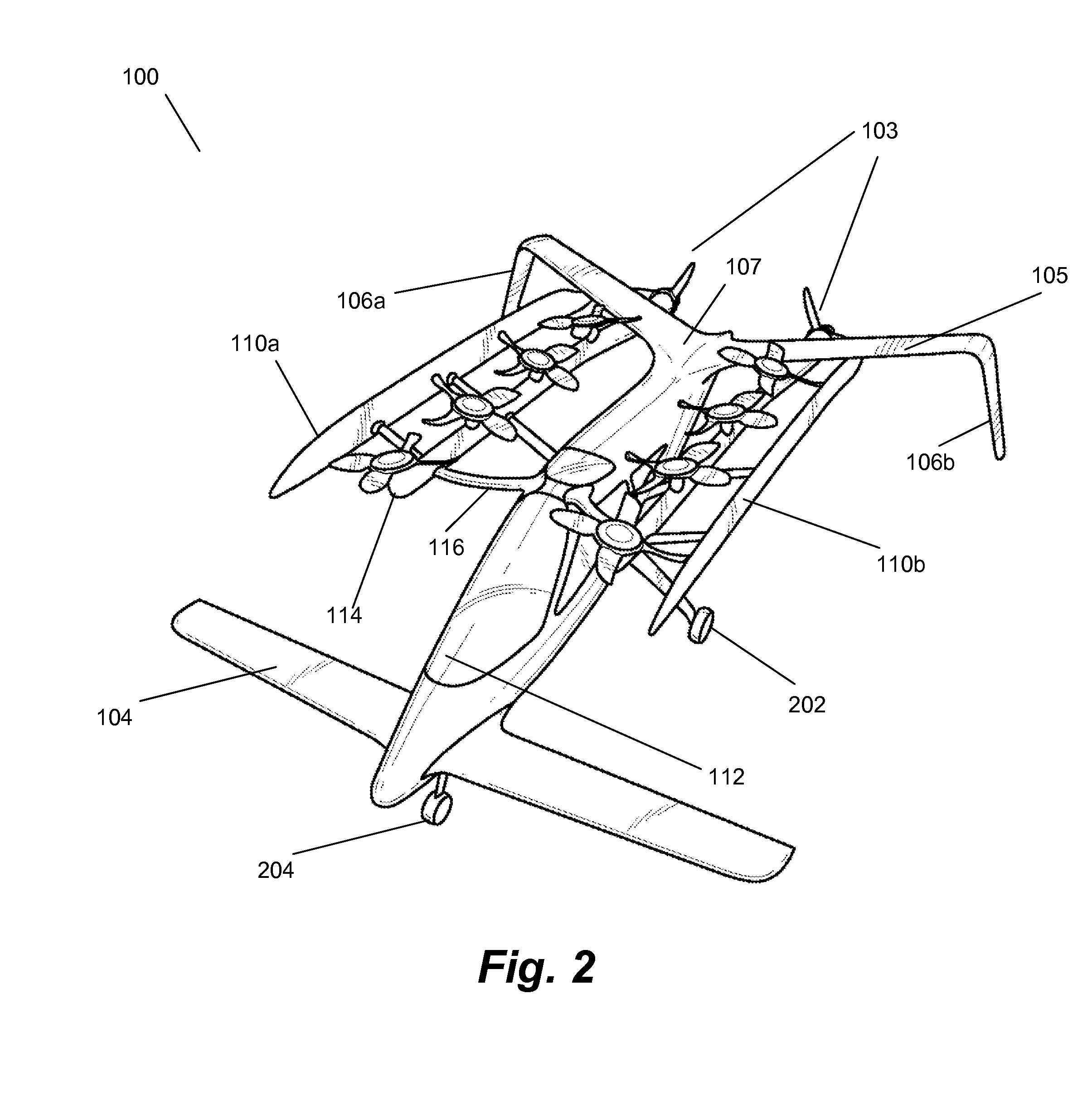Personal aircraft
a personal aircraft and rotor technology, applied in the field of personal aircraft, can solve the problems of requiring maintenance, rotors are typically quite complex, and utilize mechanically complex systems to control both the collective and cyclic blade angles, etc., to achieve high compactness, safety, quiet and efficient, and easy control
- Summary
- Abstract
- Description
- Claims
- Application Information
AI Technical Summary
Benefits of technology
Problems solved by technology
Method used
Image
Examples
Embodiment Construction
[0017]FIG. 1 illustrates a personal aircraft 100 in accordance with one embodiment. Aircraft 100 includes vertical lift rotor assemblies 101a and 101b (generally, 101) with fixed orientations; forward flight propellers 103; a forward wing 104; a rear wing 105 having winglets 106a and 106b (generally, 106); fences 110a and 110b (generally 110), a cockpit area 112 and a fuselage 107. Fuselage 107 also includes landing gear, a flight computer and power source (not shown), each of which is described further below. FIG. 2 illustrates a second view of personal aircraft 100, including propulsion booms 114, port-side main landing gear 202 and forward landing gear 204. FIG. 3 illustrates a front view of personal aircraft 100, in which port landing gear 202a, starboard landing gear 202b and nose gear 204 are visible. FIG. 4 illustrates a view of the left (port) side of aircraft 100 in accordance with one embodiment.
[0018]In various embodiments, aircraft 100 is sized to accommodate a single pi...
PUM
 Login to View More
Login to View More Abstract
Description
Claims
Application Information
 Login to View More
Login to View More - R&D
- Intellectual Property
- Life Sciences
- Materials
- Tech Scout
- Unparalleled Data Quality
- Higher Quality Content
- 60% Fewer Hallucinations
Browse by: Latest US Patents, China's latest patents, Technical Efficacy Thesaurus, Application Domain, Technology Topic, Popular Technical Reports.
© 2025 PatSnap. All rights reserved.Legal|Privacy policy|Modern Slavery Act Transparency Statement|Sitemap|About US| Contact US: help@patsnap.com



